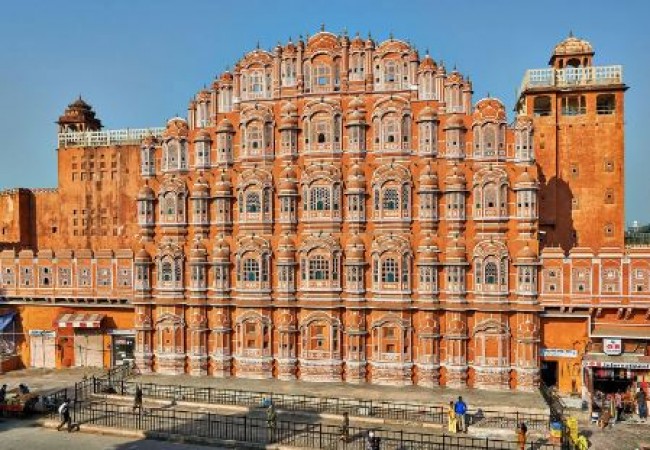
Hawa Mahal, literally translating to "Palace of Winds," is an iconic structure located in Jaipur, India. Its name evokes images of grandeur and elegance, but how did this architectural marvel come to be?
History Behind the Name
The name "Hawa Mahal" derives from two words: "Hawa" meaning wind, and "Mahal" meaning palace. The palace was built in 1799 by Maharaja Sawai Pratap Singh, a ruler of the Kachhwaha Rajput dynasty. The name reflects its unique design, which allows a cool breeze to flow through the palace, providing relief from the scorching desert heat of Rajasthan.
Architectural Marvel
Unique Design Features
Hawa Mahal is renowned for its intricate architecture, characterized by its façade adorned with small windows or 'jharokhas.' These windows were designed to allow royal ladies to observe everyday life and festivals in the street below without being seen, in adherence to strict purdah (veil) customs prevalent during that era.
Construction of Hawa Mahal
The Vision of Maharaja Sawai Pratap Singh
Maharaja Sawai Pratap Singh, known for his patronage of art and architecture, envisioned Hawa Mahal as an extension of the City Palace, designed specifically for the women of the royal household. The palace's unique five-storey exterior resembles the crown of Lord Krishna, designed to mimic the god's crown, denoting a deep sense of religious reverence.
Architectural Influences
The palace's design draws inspiration from the Rajputana architecture and the unique honeycomb structure of beehives, with over 900 small windows called 'jharokhas.' This construction provides a natural cooling effect by allowing air to pass through, even during the hottest summers.
Purpose and Functionality
Purpose of Construction
The primary purpose of Hawa Mahal was to provide a secluded space for the royal women to observe the outside world while maintaining their privacy. This architectural marvel served both functional and cultural purposes, reflecting the lifestyle and traditions of the Rajputana royalty.
Cultural Significance
Hawa Mahal stands as a symbol of Jaipur's rich cultural heritage, showcasing the blend of artistry and practicality in Rajput architecture. Its intricate design and historical significance make it a popular tourist attraction, drawing visitors from around the globe to marvel at its beauty and historical importance.
Legacy and Tourism
Iconic Symbol
Today, Hawa Mahal stands as an iconic symbol of Jaipur and Rajasthan's architectural prowess. It has become synonymous with the city's identity and serves as a reminder of its royal heritage.
Tourism and Visitor Experience
Every year, thousands of tourists flock to Hawa Mahal to witness its breathtaking façade and experience its historical aura. The palace offers a glimpse into Rajasthan's royal past and architectural brilliance, making it a must-visit destination for history enthusiasts and travelers alike.
Preservation and Conservation
Efforts in Preservation
Efforts are continually made to preserve and maintain Hawa Mahal's structural integrity and historical significance. Conservation projects ensure that this architectural gem remains accessible for future generations to appreciate and admire.
UNESCO World Heritage Status
Hawa Mahal, along with other landmarks in Jaipur, is a part of UNESCO's World Heritage Site nomination under the "Hill Forts of Rajasthan." This recognition underscores its global importance and ensures its protection as a cultural treasure.
What is'Kavach? Indian Railways Floats Tender for 10,000 km of 'Kavach' System, Details Here
Great opportunity to buy Tata Nexon this month, get a discount of Rs 1 lakh
Read the review of Mahindra Scorpio N Z8 Select Automatic, best deal at price!